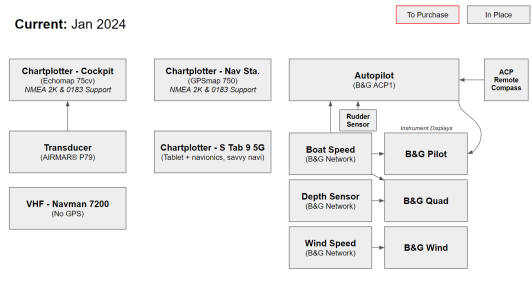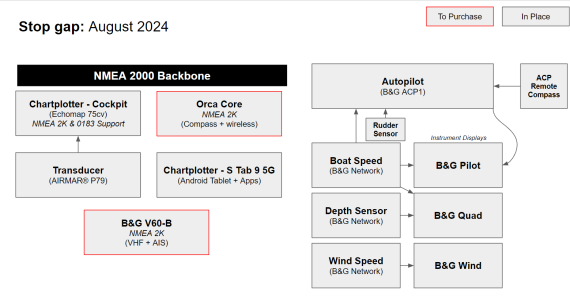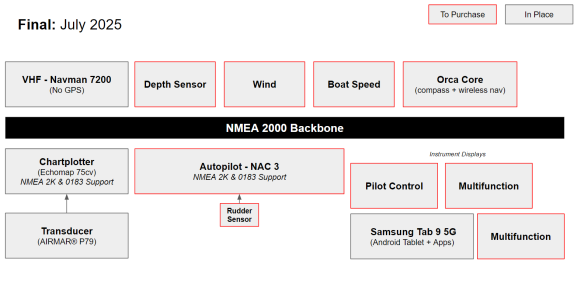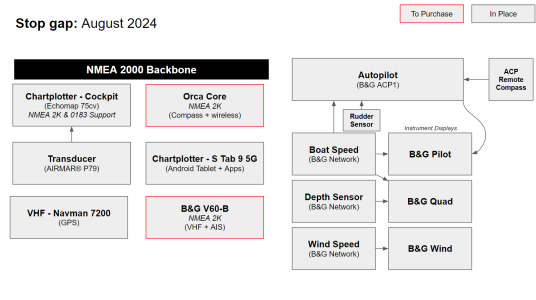ColourfulOwl
Member
Over the next 2 years i'm refitting my boat with a variety of equipment to turn it into a liveaboard as a solo sailor. The current sailing focused piece of kit I'm looking at is sorting out my VHF. The current VHF is a Navman 7200 and is in the cabin. Unfortunately this means I don't have a VHF in the cockpit, and it's quite a bit of a faff going down below to answer and send VHF calls.
I bought an Icom MD94 handheld VHF to solve this problem in the short term, but long term I want to replace my VHF with one that supports a secondary mic/command mic in the cockpit. The MD94 will stay as an auxiliary / ditch VHF. I'll sell the Navman later down the line.
My question, is is it worth getting a VHF with an integrated AIS transponder or buying them separately? B&G/Simrad/Lowrance offer an integrated one, the V60B which can be paired with a wireless mic. Financial it makes to go integrated, but does any know of any weaknesses in doing so? Has anyone got any experience with the V60B?
I want to put an AIS transponder on my boat because in a mayday/panpan situation I can provide the coastguard with my details and they can then track the vessels location without the need of constant location check in every 10-20 minutes. That free's me up to then try and tackle whatever the situation is. AIS in general would be pretty useful for the areas I intend to sail. My boat is currently in Fleetwood, and when I head southward, there are plenty of shipping lanes I'll have to deal with.
I bought an Icom MD94 handheld VHF to solve this problem in the short term, but long term I want to replace my VHF with one that supports a secondary mic/command mic in the cockpit. The MD94 will stay as an auxiliary / ditch VHF. I'll sell the Navman later down the line.
My question, is is it worth getting a VHF with an integrated AIS transponder or buying them separately? B&G/Simrad/Lowrance offer an integrated one, the V60B which can be paired with a wireless mic. Financial it makes to go integrated, but does any know of any weaknesses in doing so? Has anyone got any experience with the V60B?
I want to put an AIS transponder on my boat because in a mayday/panpan situation I can provide the coastguard with my details and they can then track the vessels location without the need of constant location check in every 10-20 minutes. That free's me up to then try and tackle whatever the situation is. AIS in general would be pretty useful for the areas I intend to sail. My boat is currently in Fleetwood, and when I head southward, there are plenty of shipping lanes I'll have to deal with.




